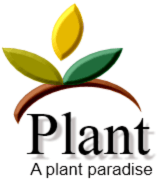Agave: Identification, plant Growth and reproduction

Learn about the plant
Agave is a genus over 200 types of rosette-creating, mostly monocarpic or sometimes traditional succulents from desert and hill regions of the Americas. The most common Agave will be the Century Herb, so-called due to the wrongly recognized perception that it blooms just once every a hundred years. There are two multi-colored varieties – Agava Americana marginata (eco-friendly foliage edged with yellow-colored) and Agava Americana mediopicta (skin cream leaves edged with natural). These plants create leaves 3 or 4 feet lengthy, and size gets them unsuitable to get a common room. Agave victoria-reginae is the ideal decision – it’s 6 in. Triangular foliage is green edged with white-colored—separate vegetation at the beginning of spring season every 4-five-years. Sow seed at 55-59 F (13-15 C) when ripe or perhaps in early spring. Seedlings will flower into two-3 years.
Plant growth conditions
Medium heat from spring season to autumn – minimum 50F in the wintertime: Semi-color or brilliant light. Offer as much lighting as you can.
Maintain garden compost wet in any way time. During winter, normal water very infrequently, after every 1-2 several weeks. No requirement to mist the foliage.
Plant reproduction
Cuttings root easily. Get originate cuttings in early spring or summer summertime. It is vital to make it possible for the cuttings dry for a while before positioning in compost. Water very sparingly, and you should not handle with polythene or glass. Another propagation strategy is seed sowing – germination temperatures are 70-80 F
